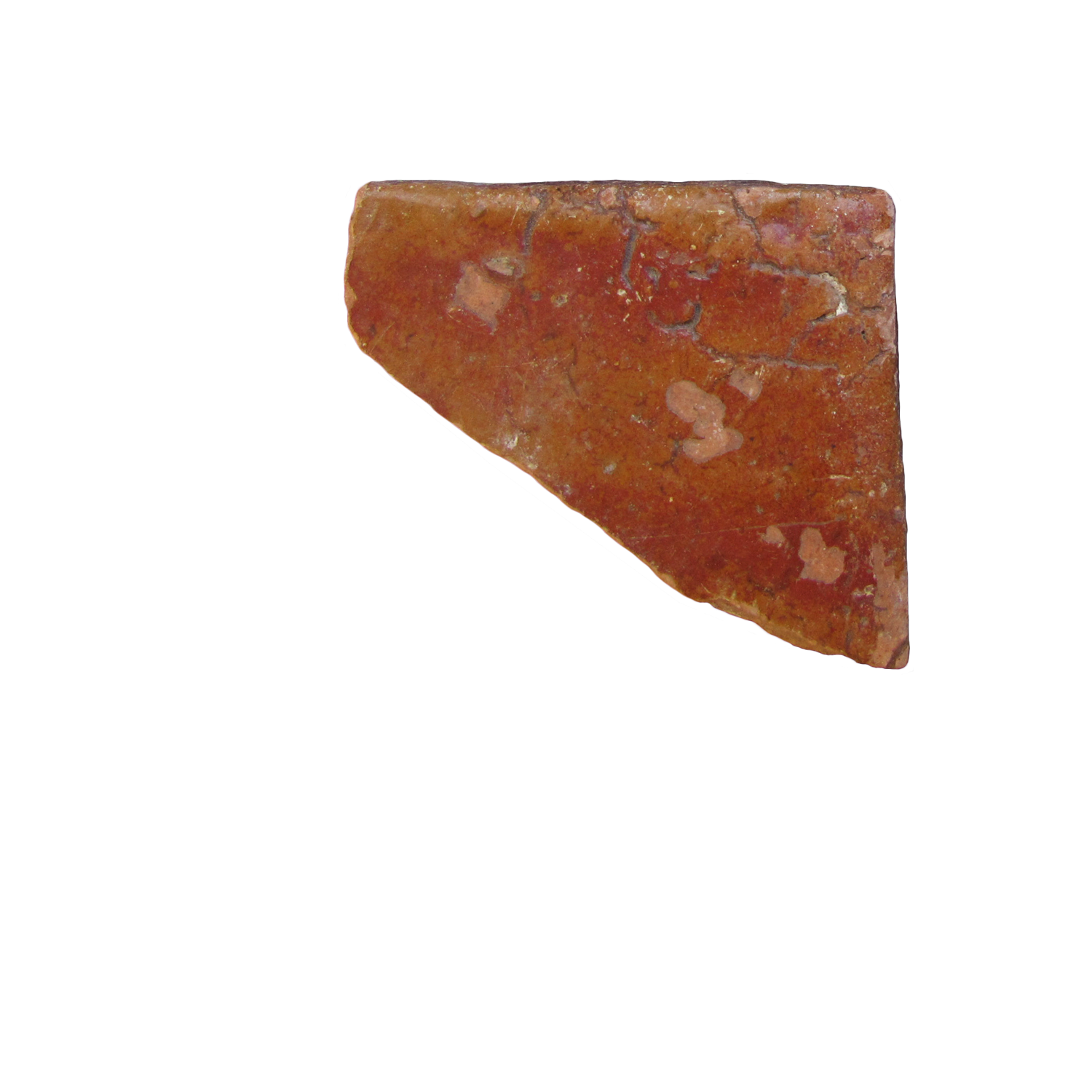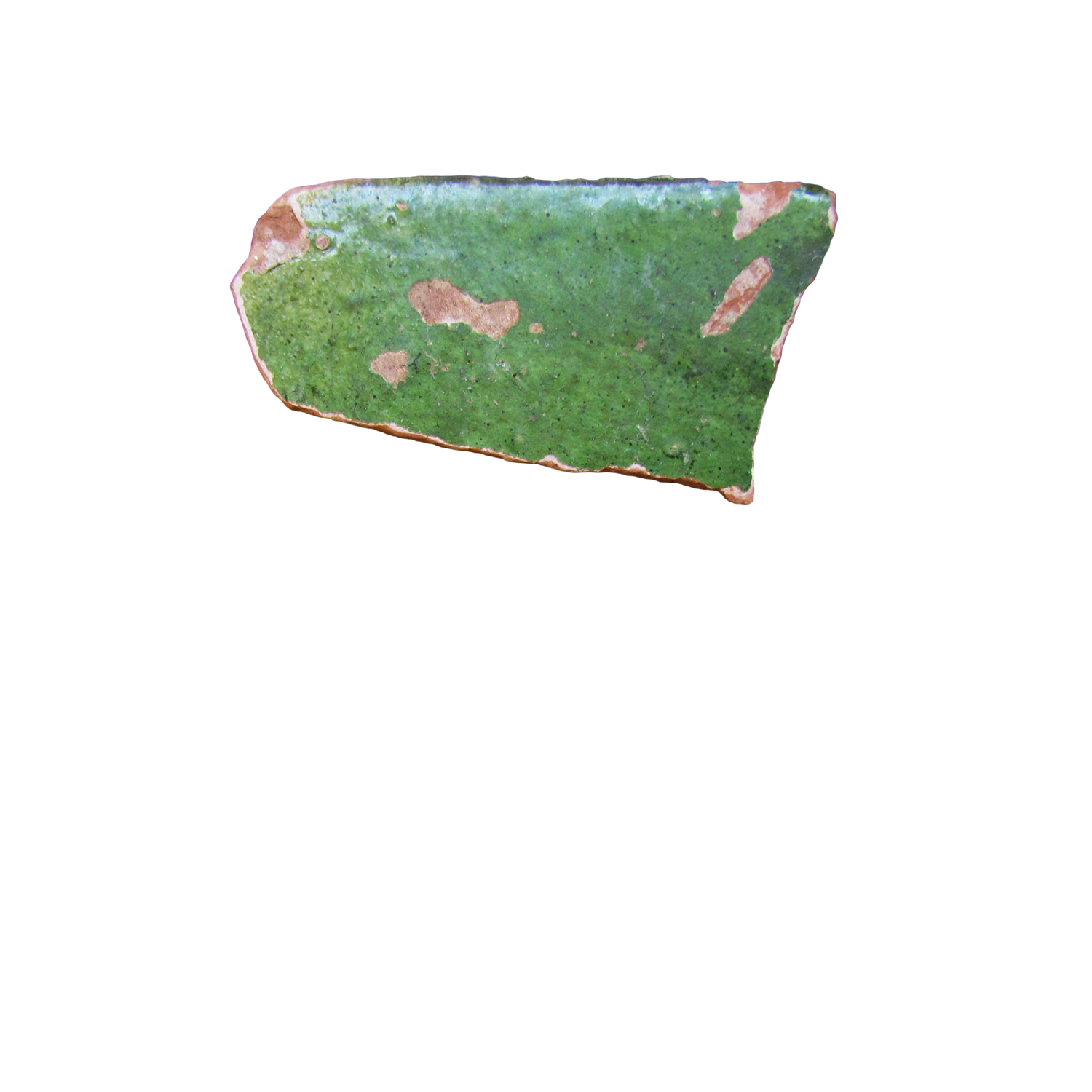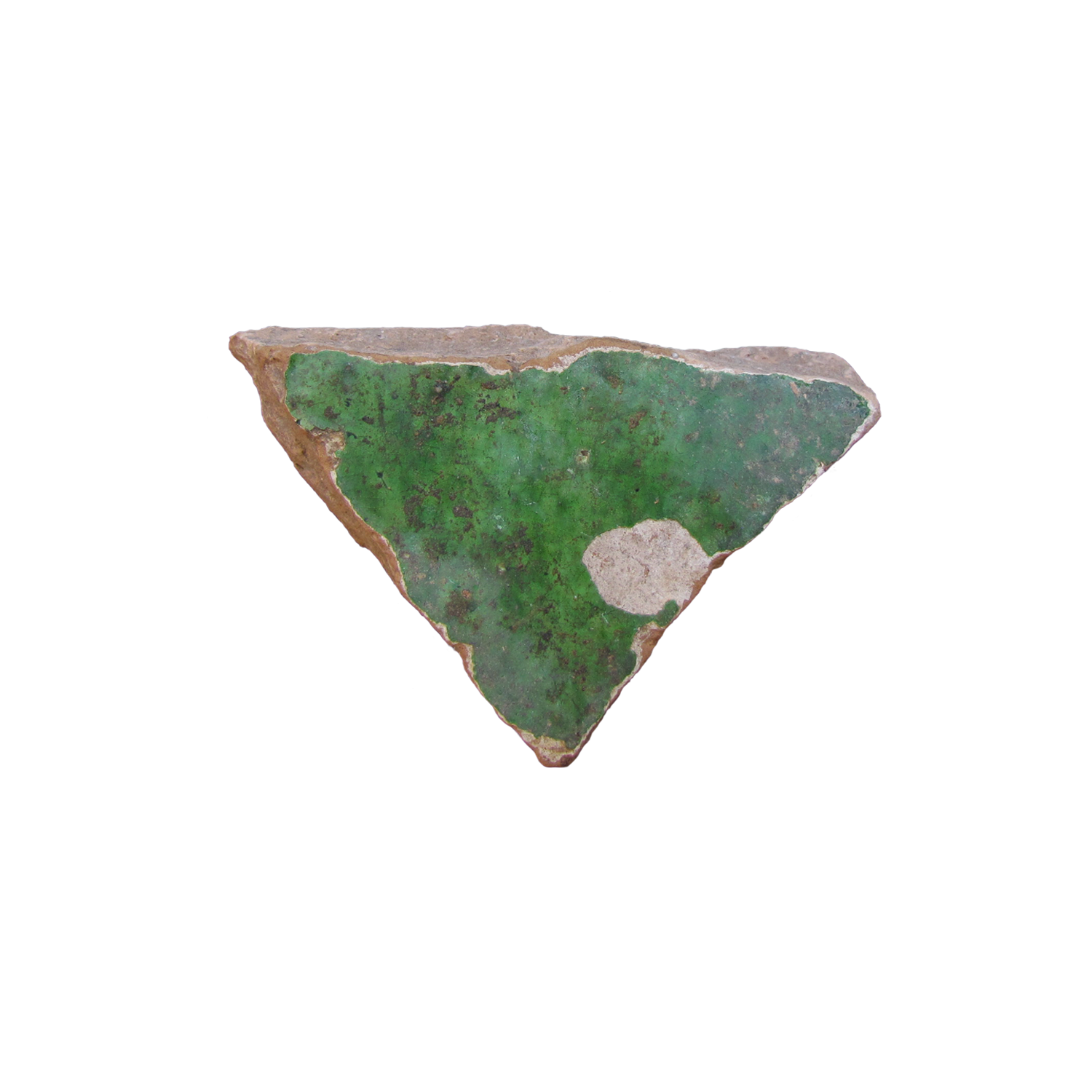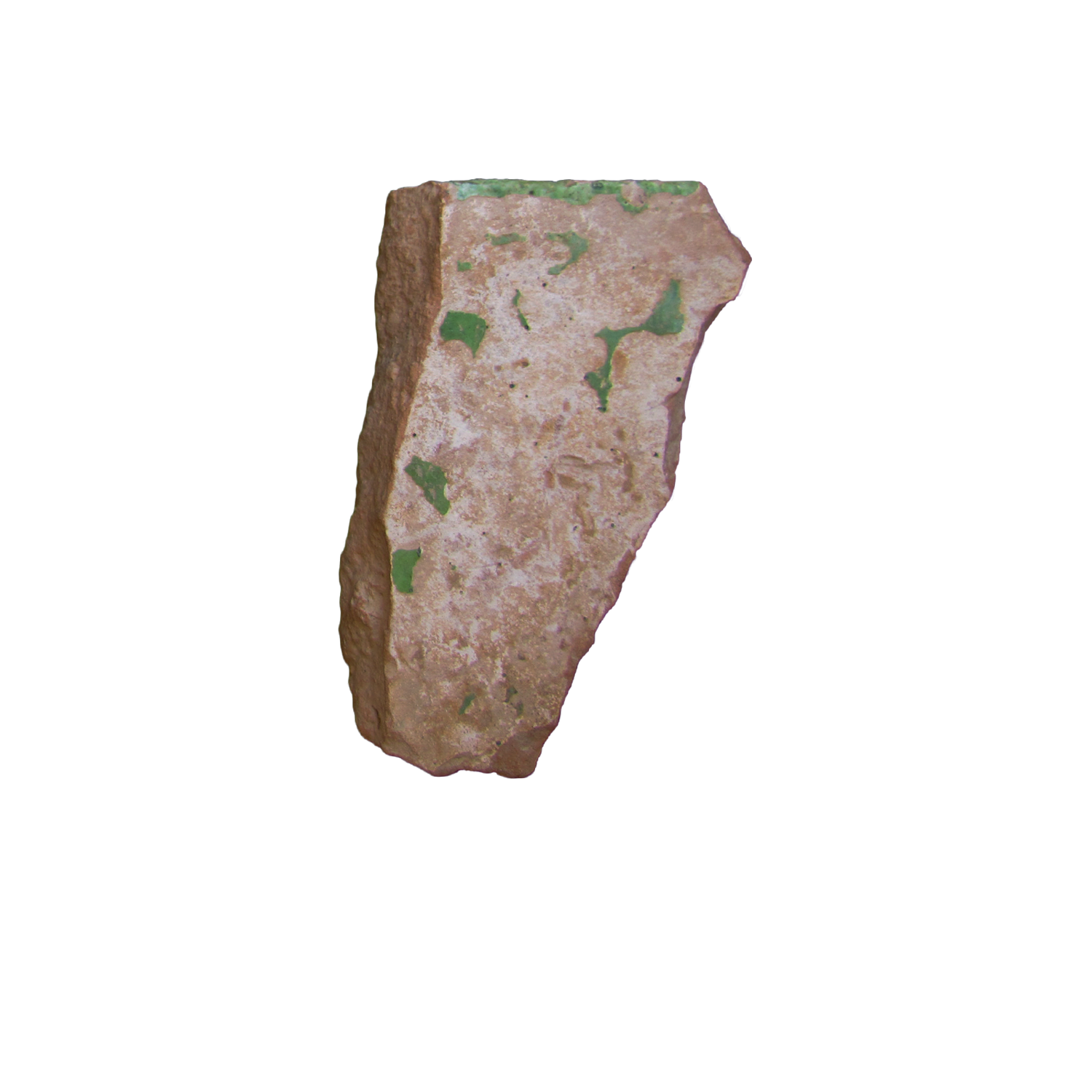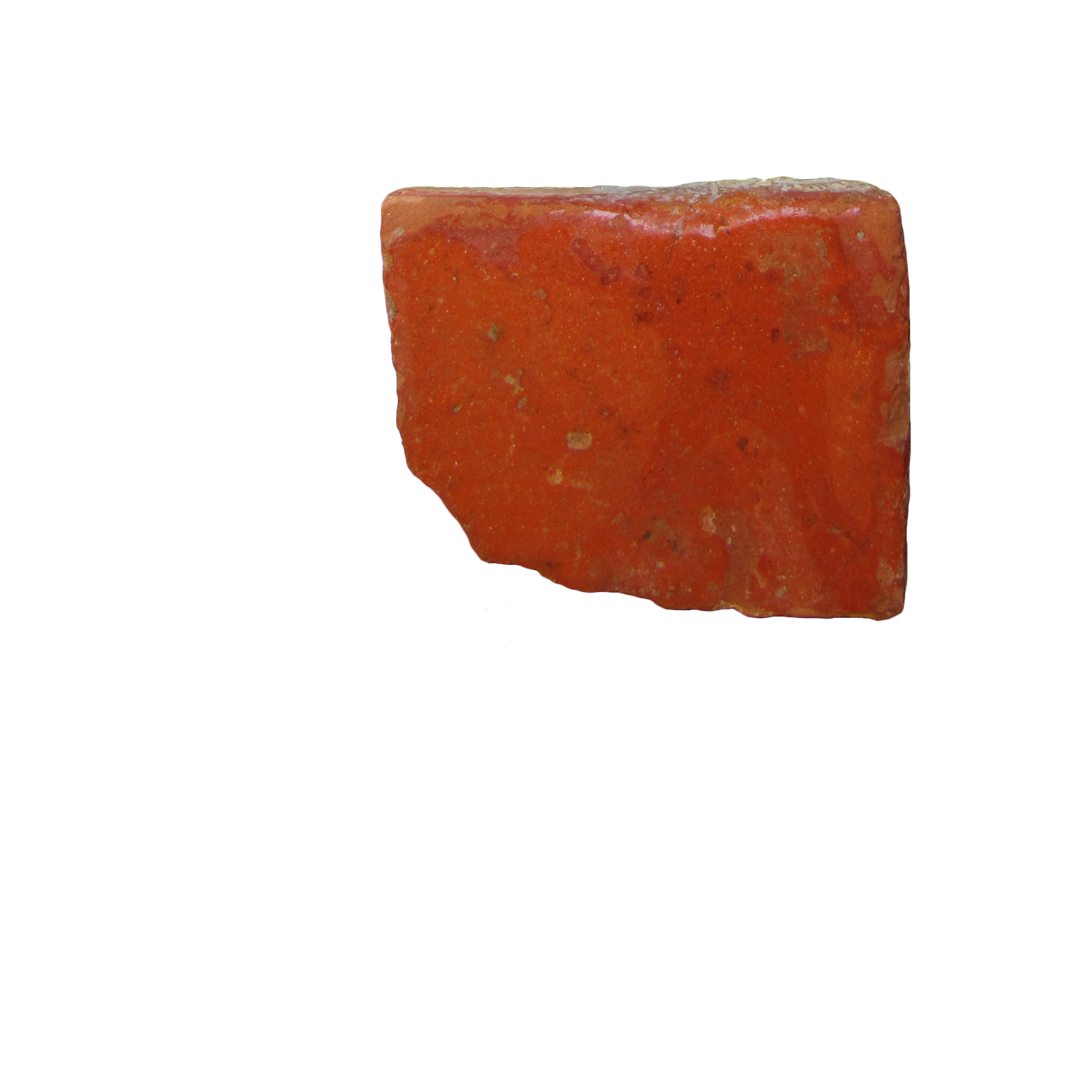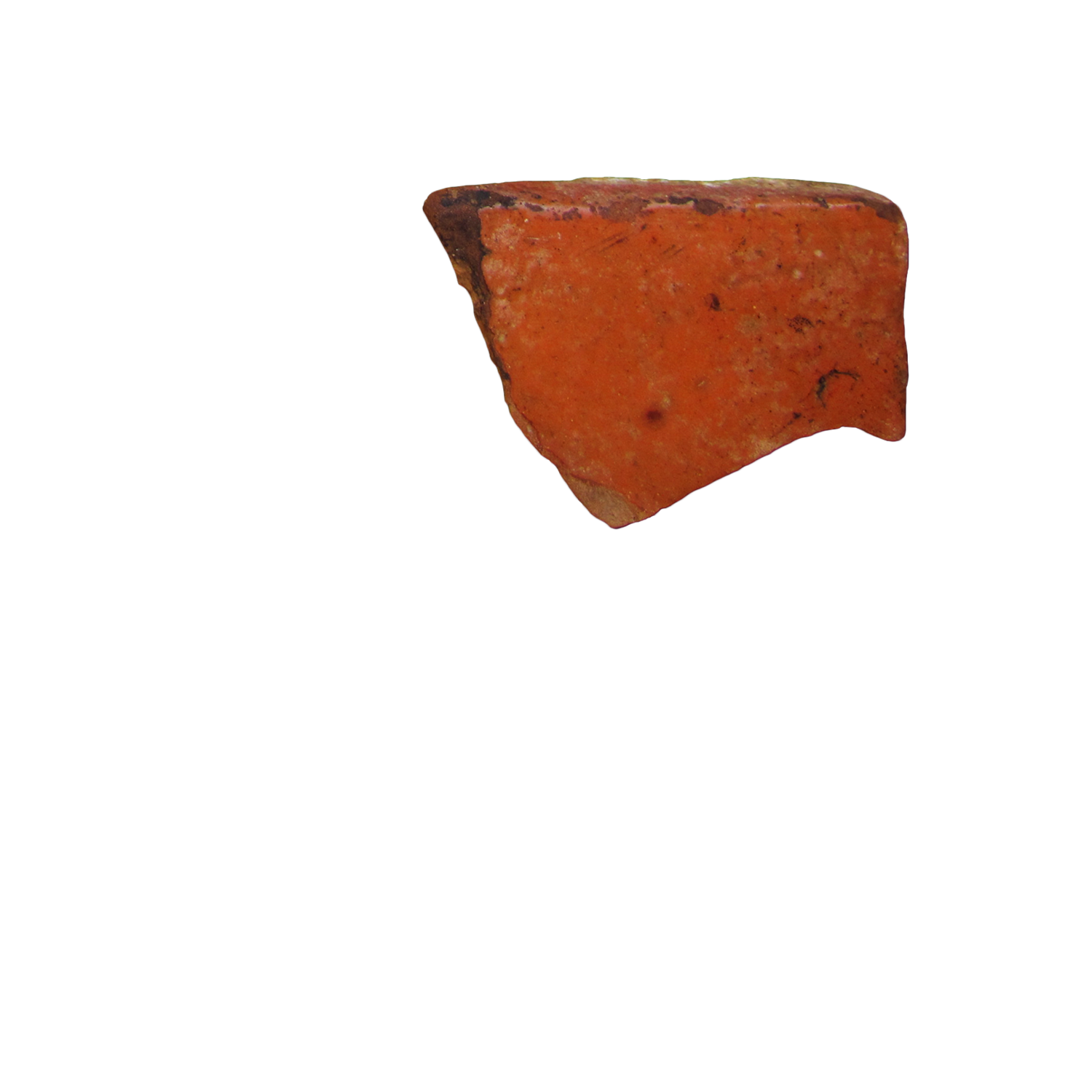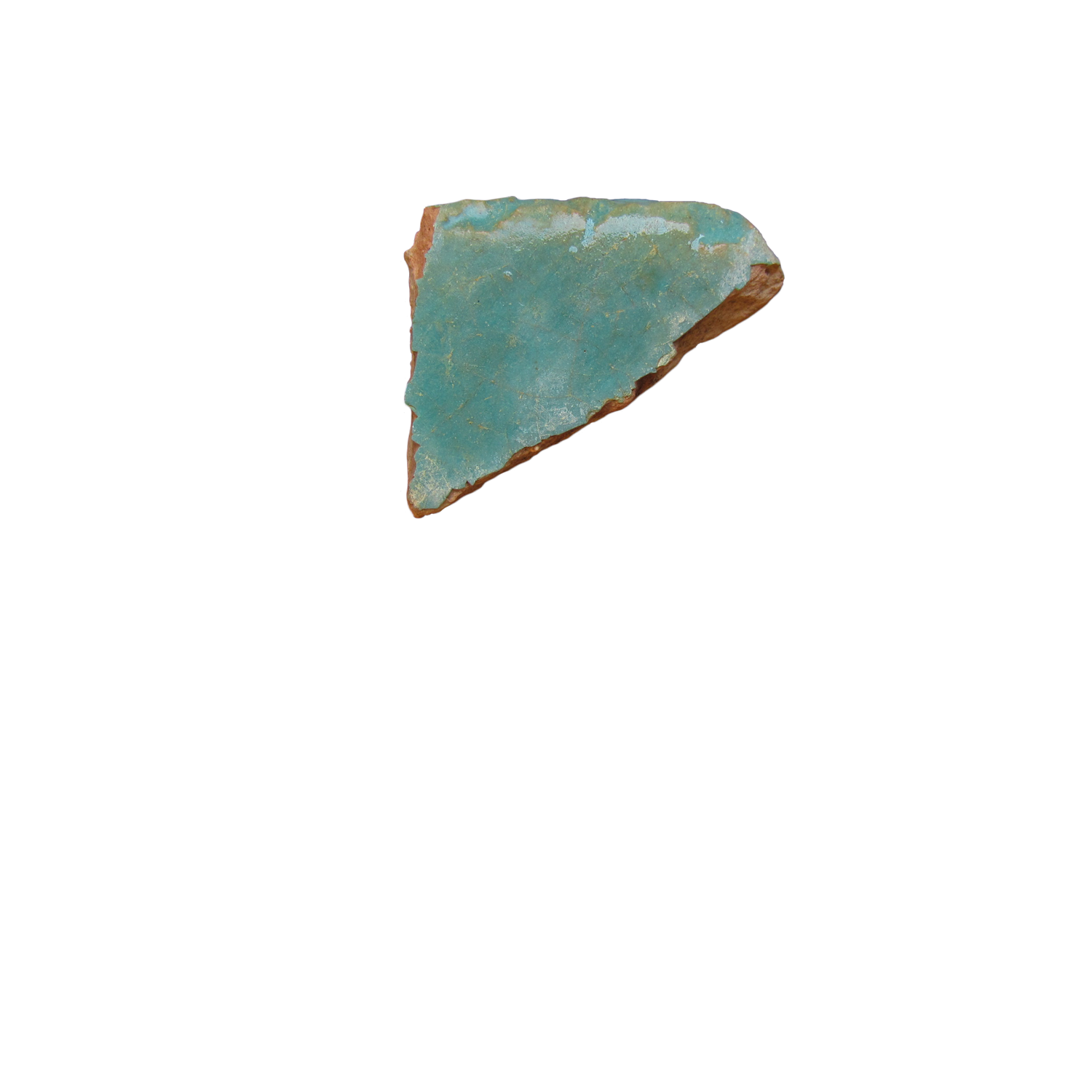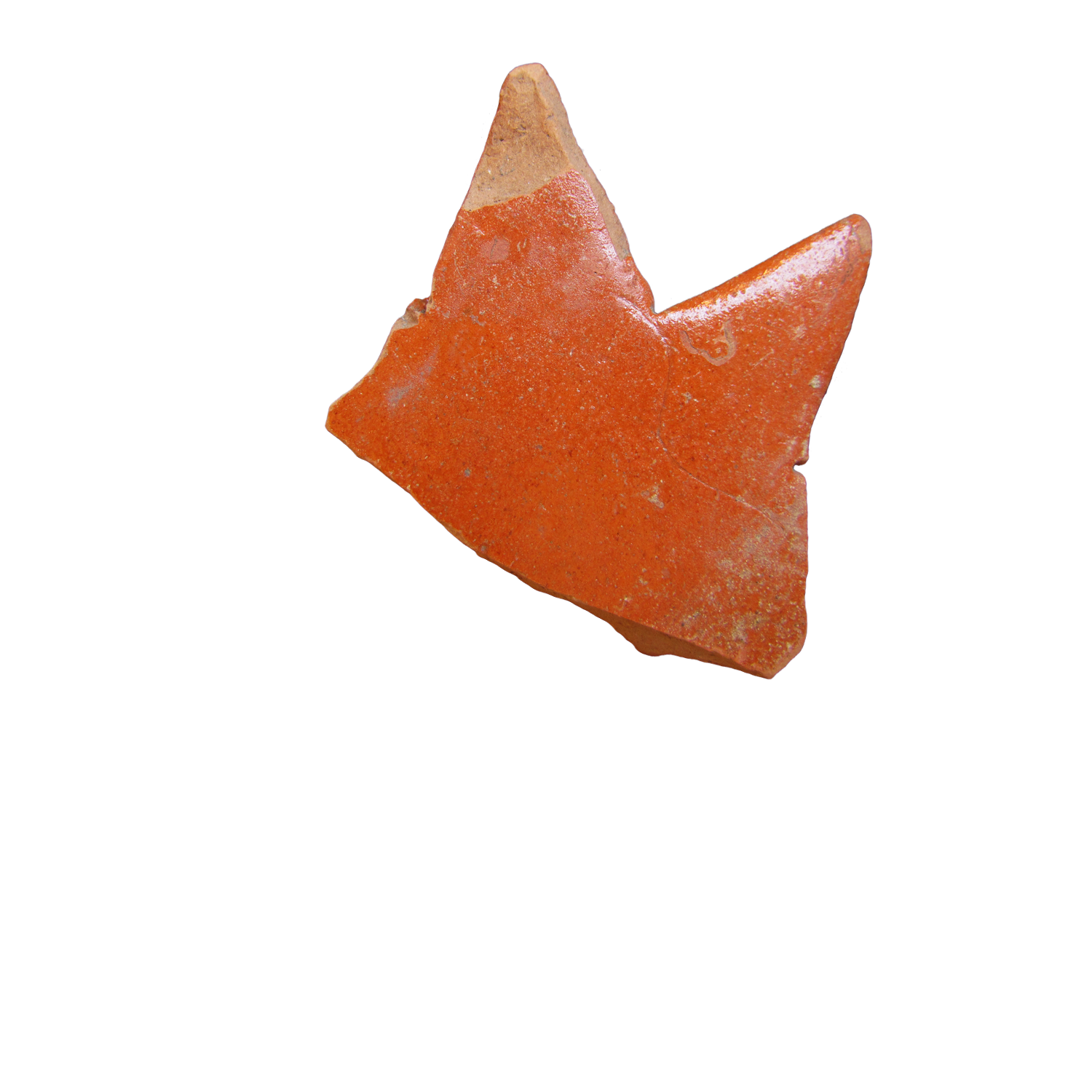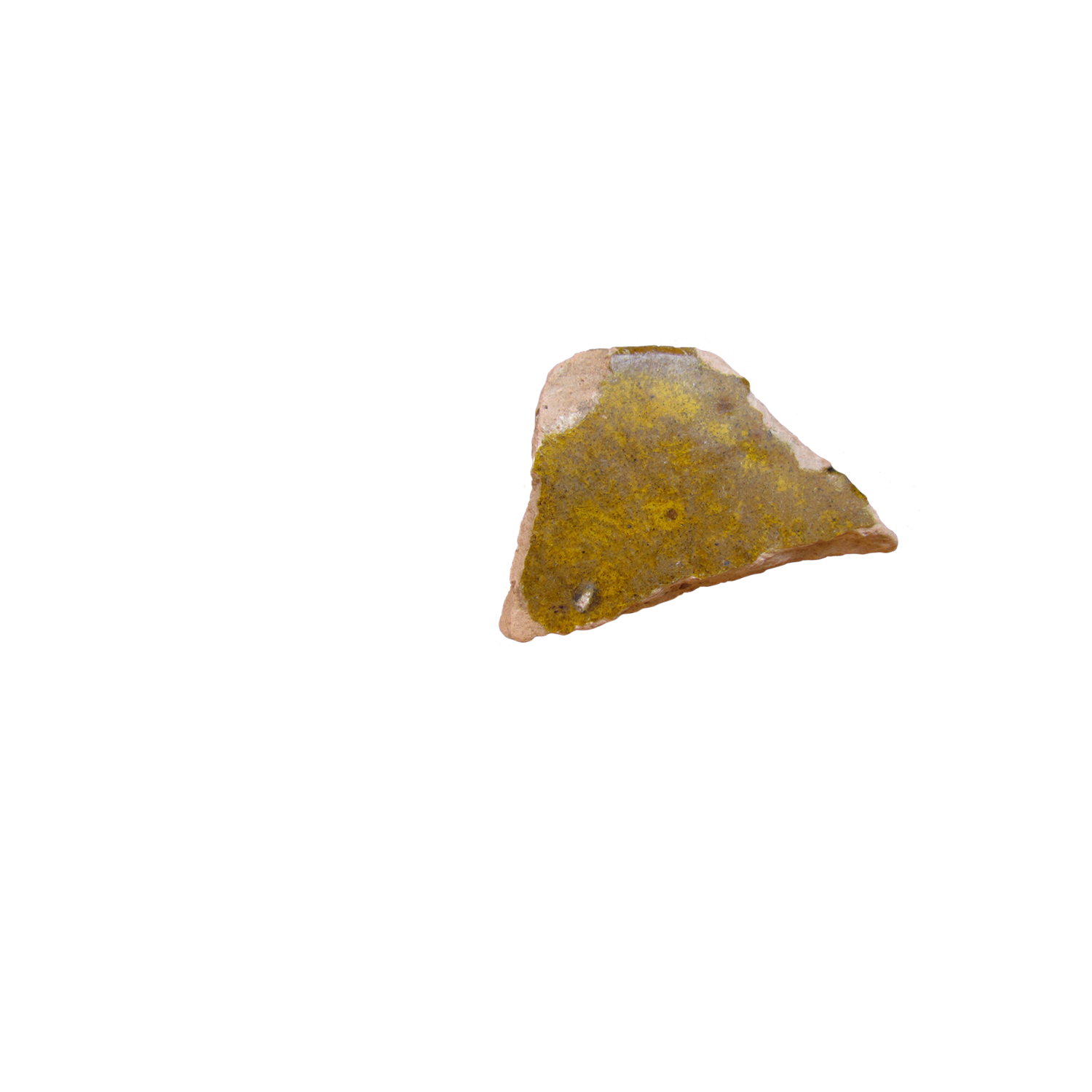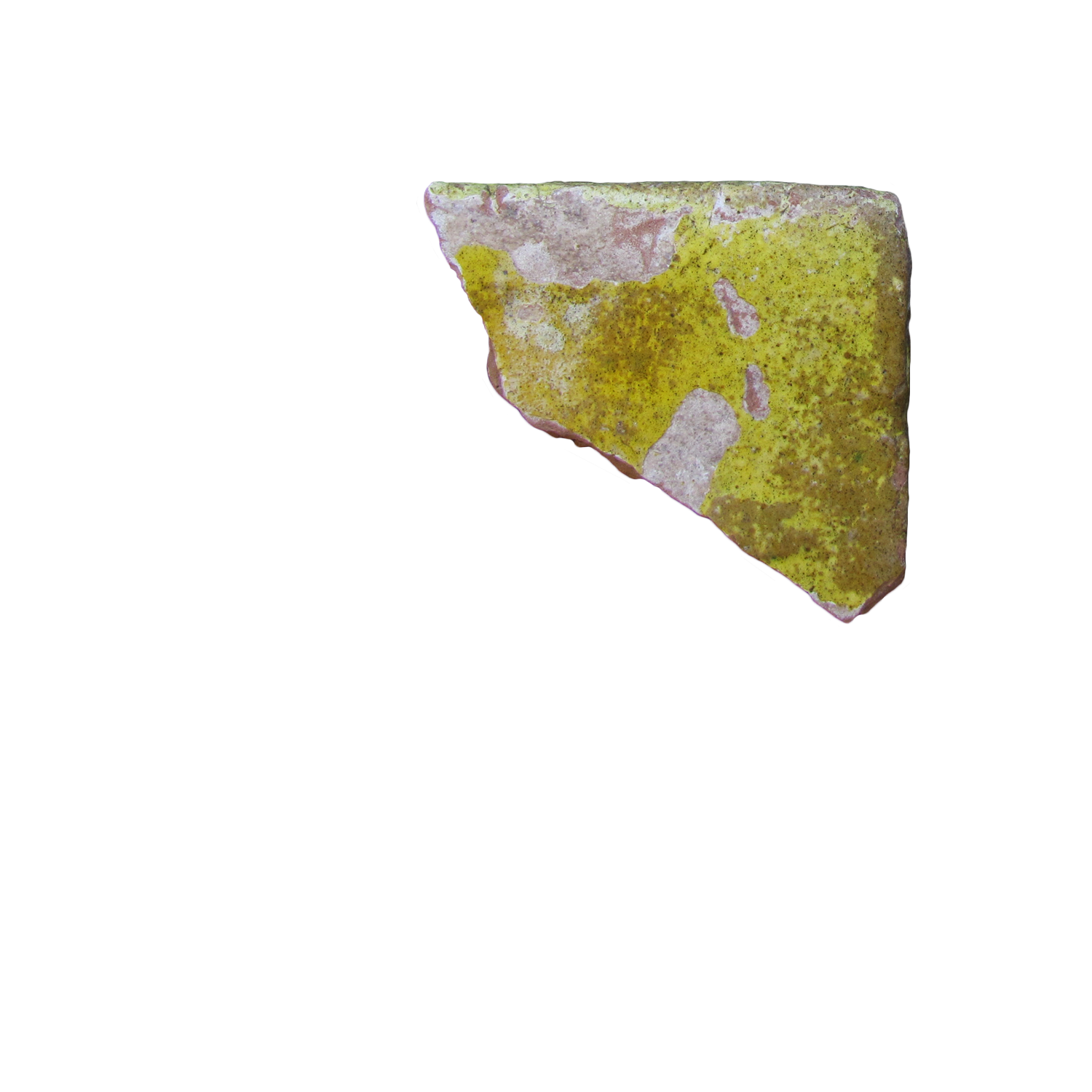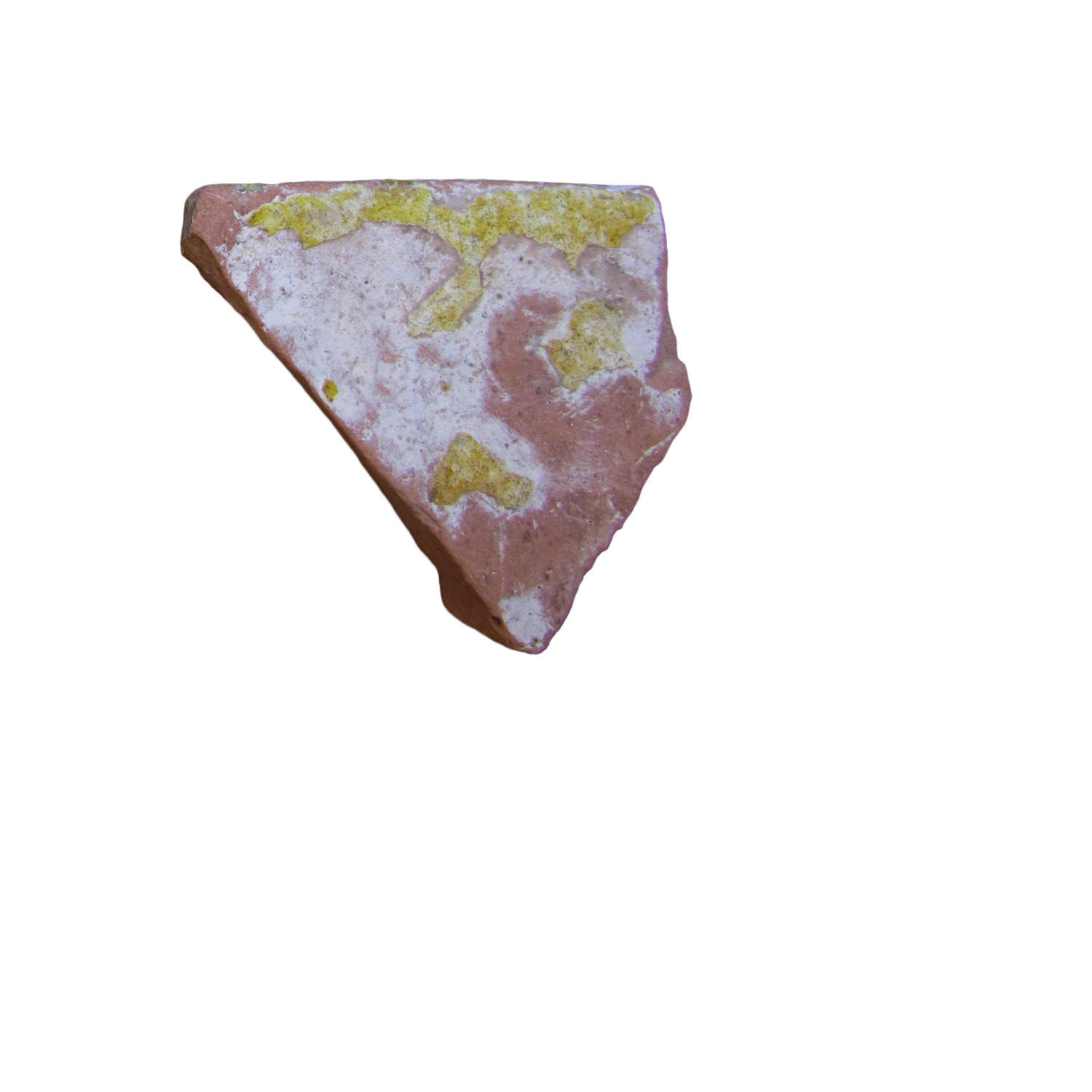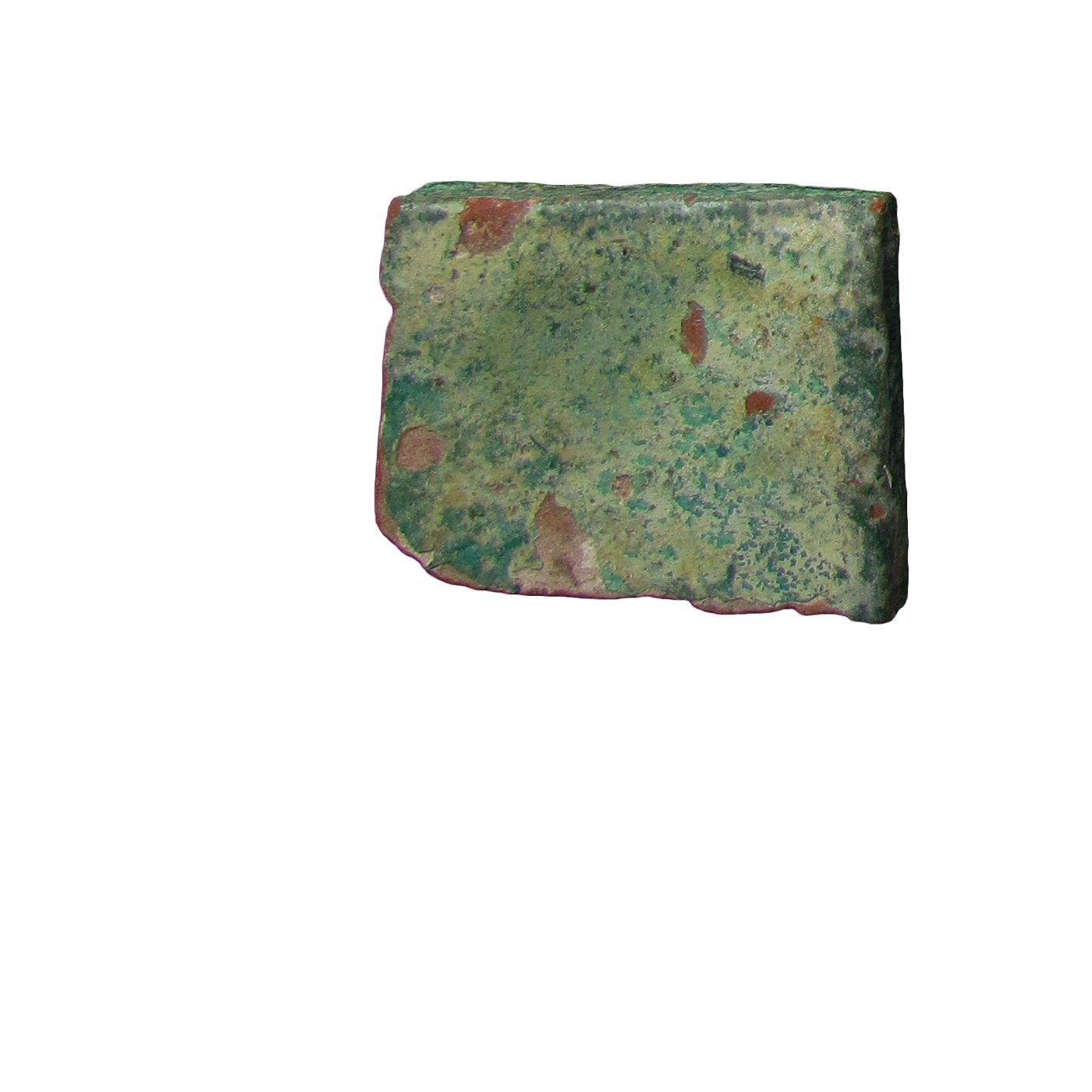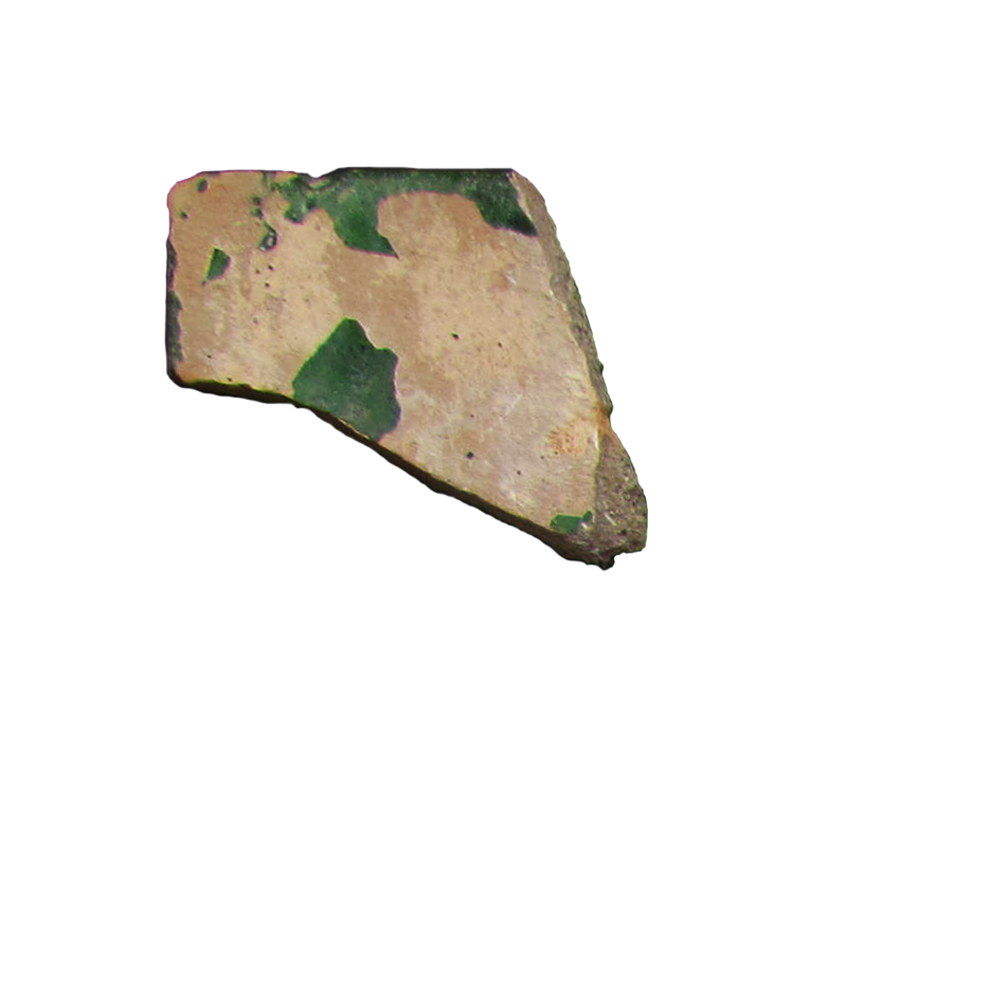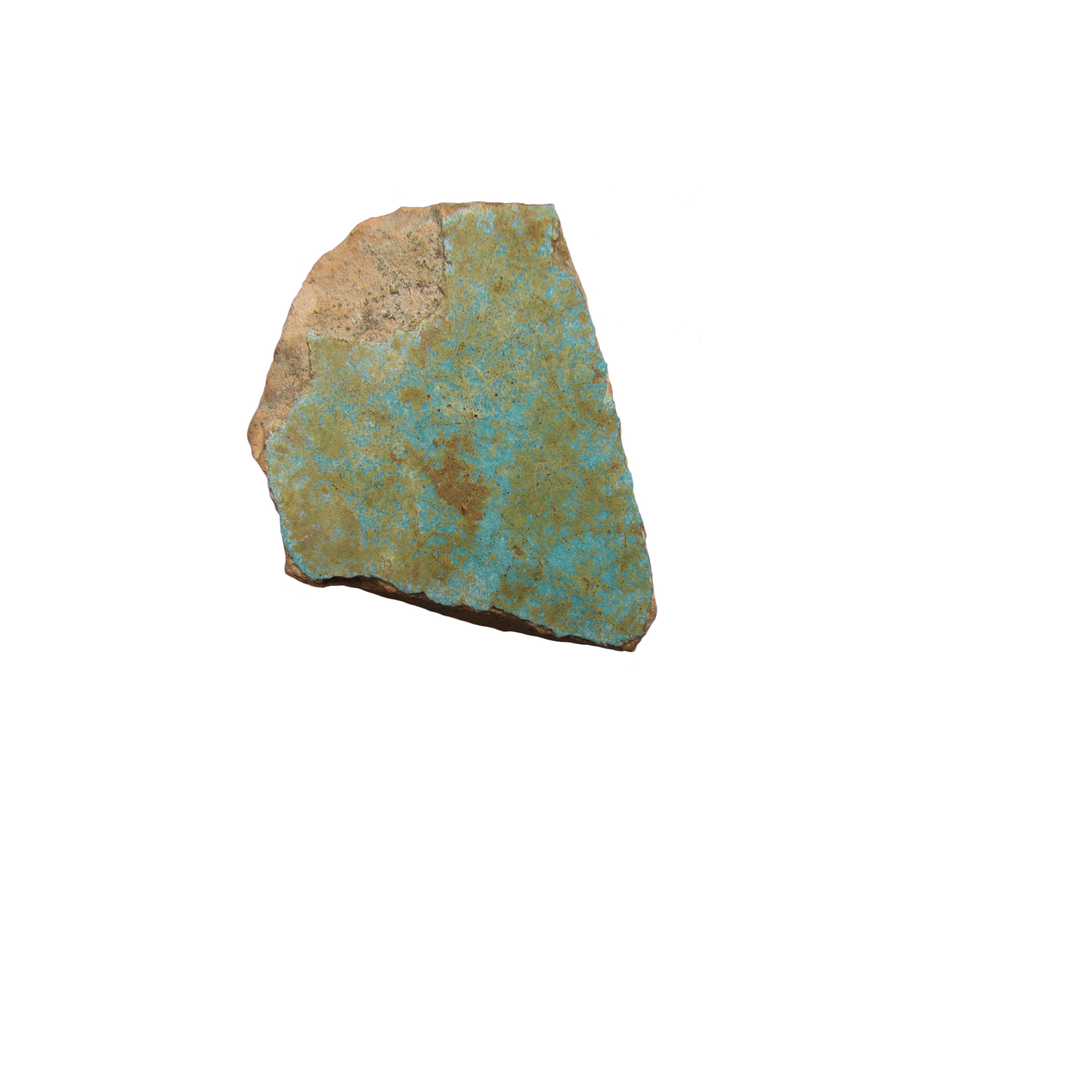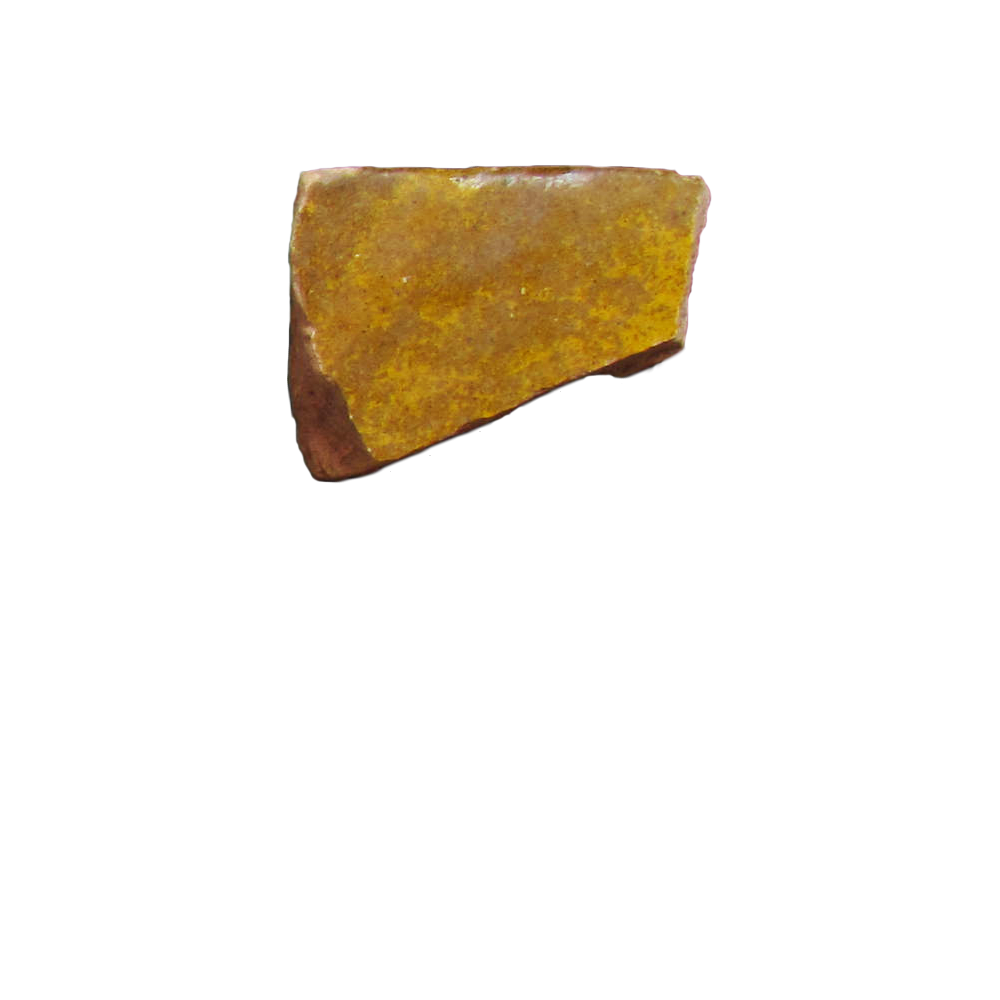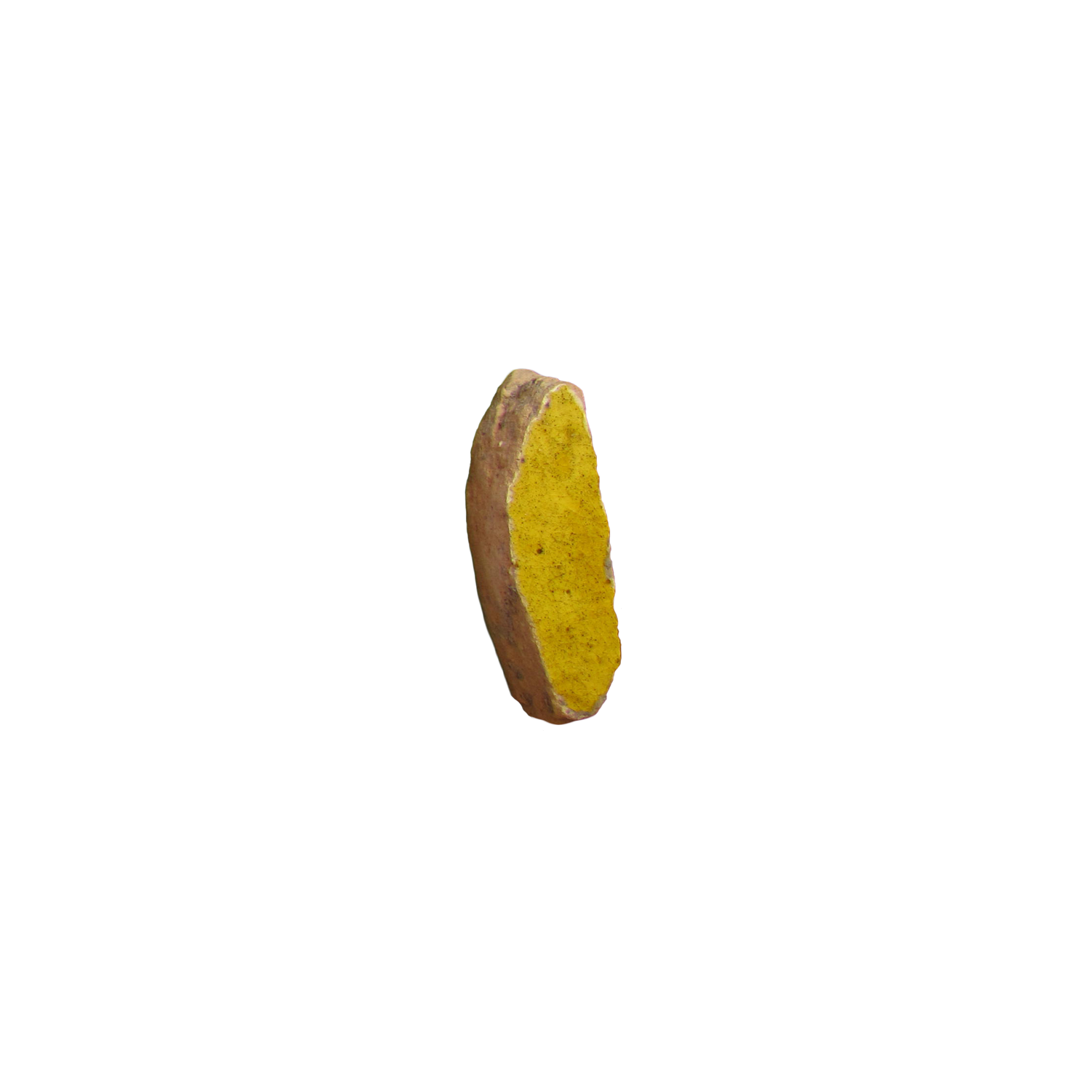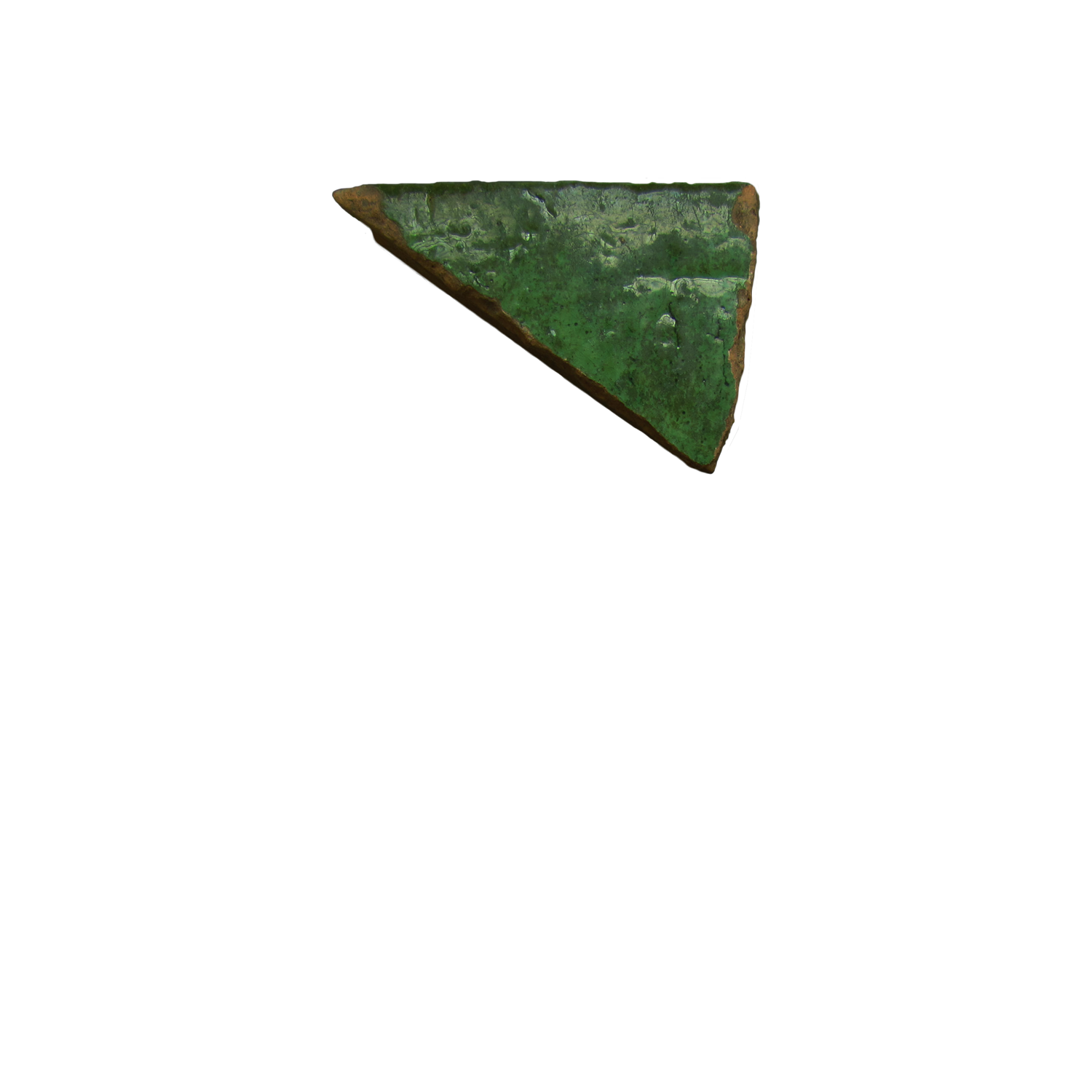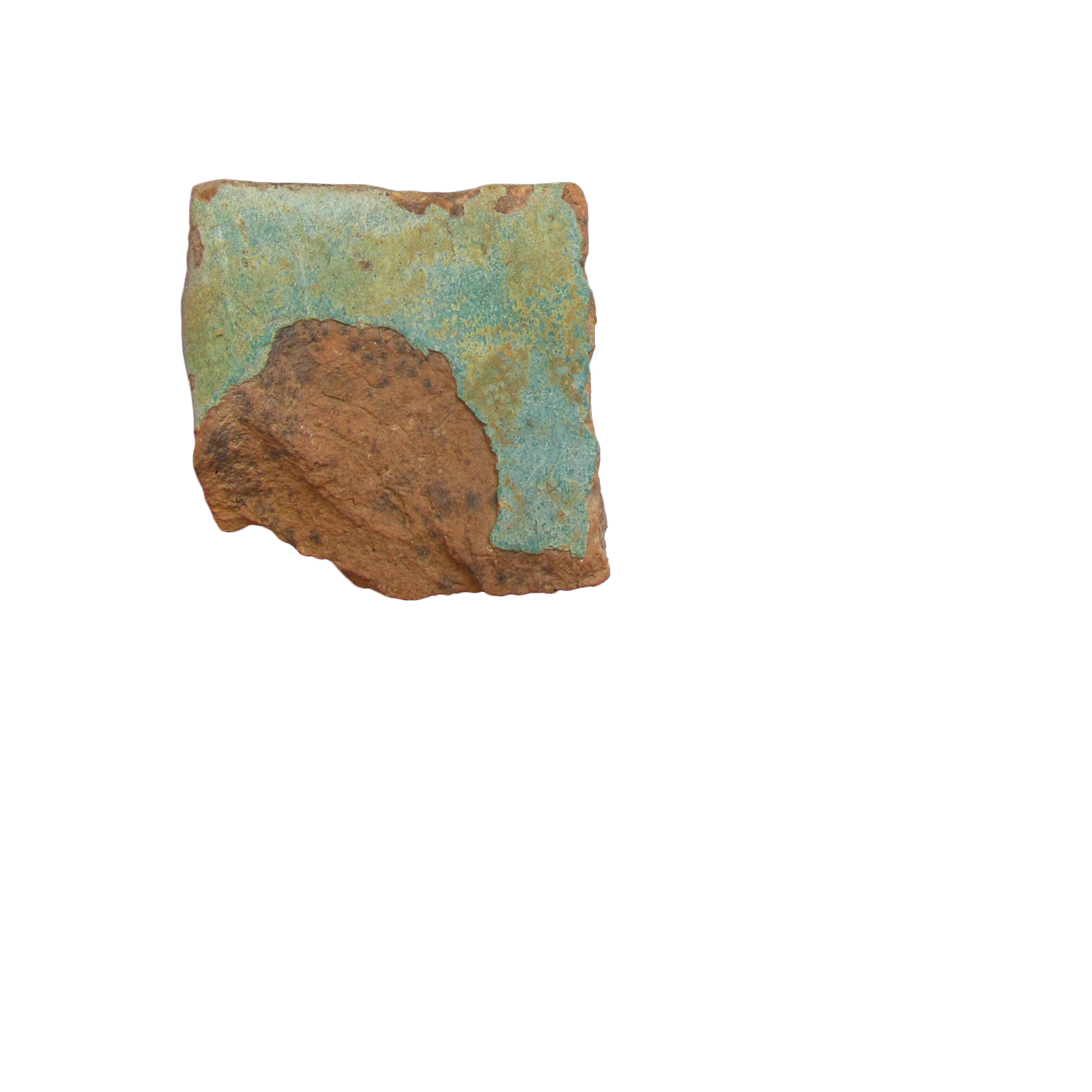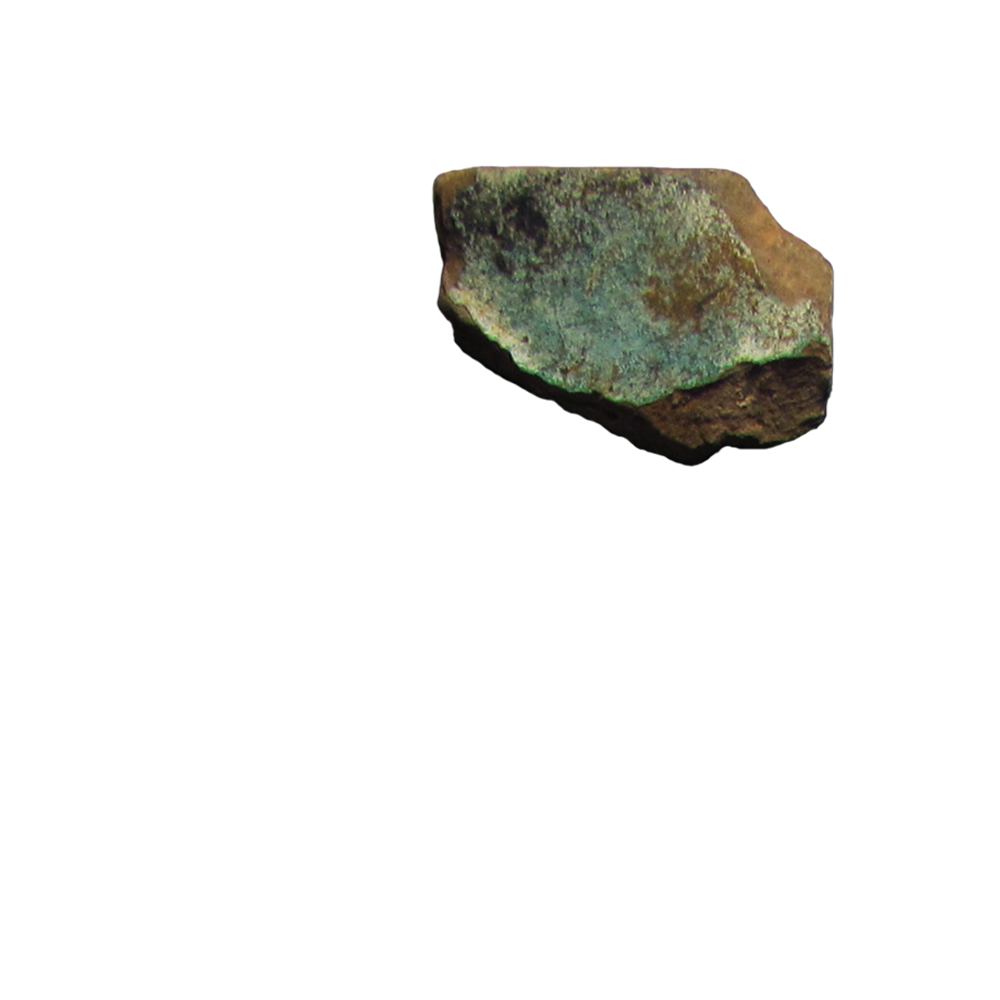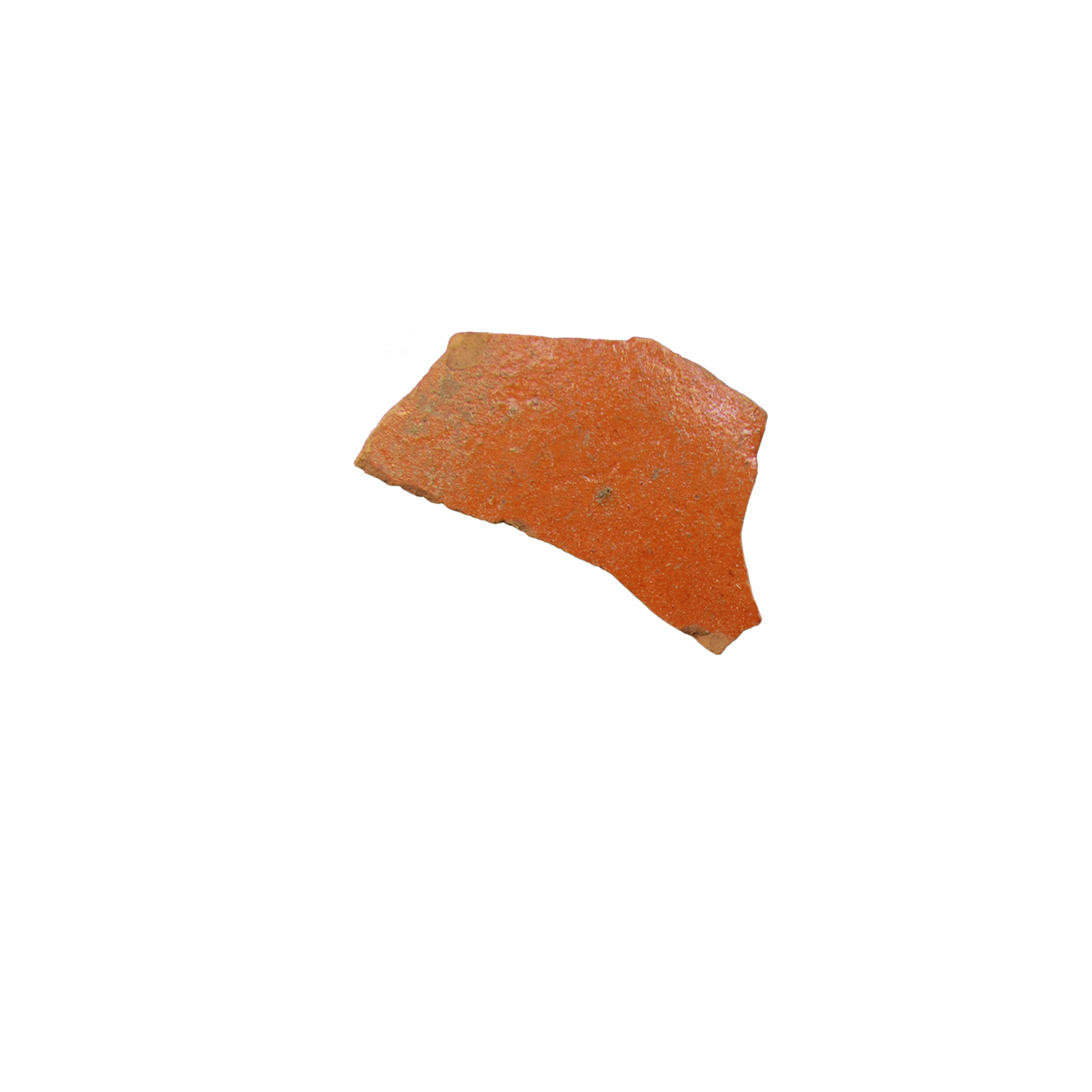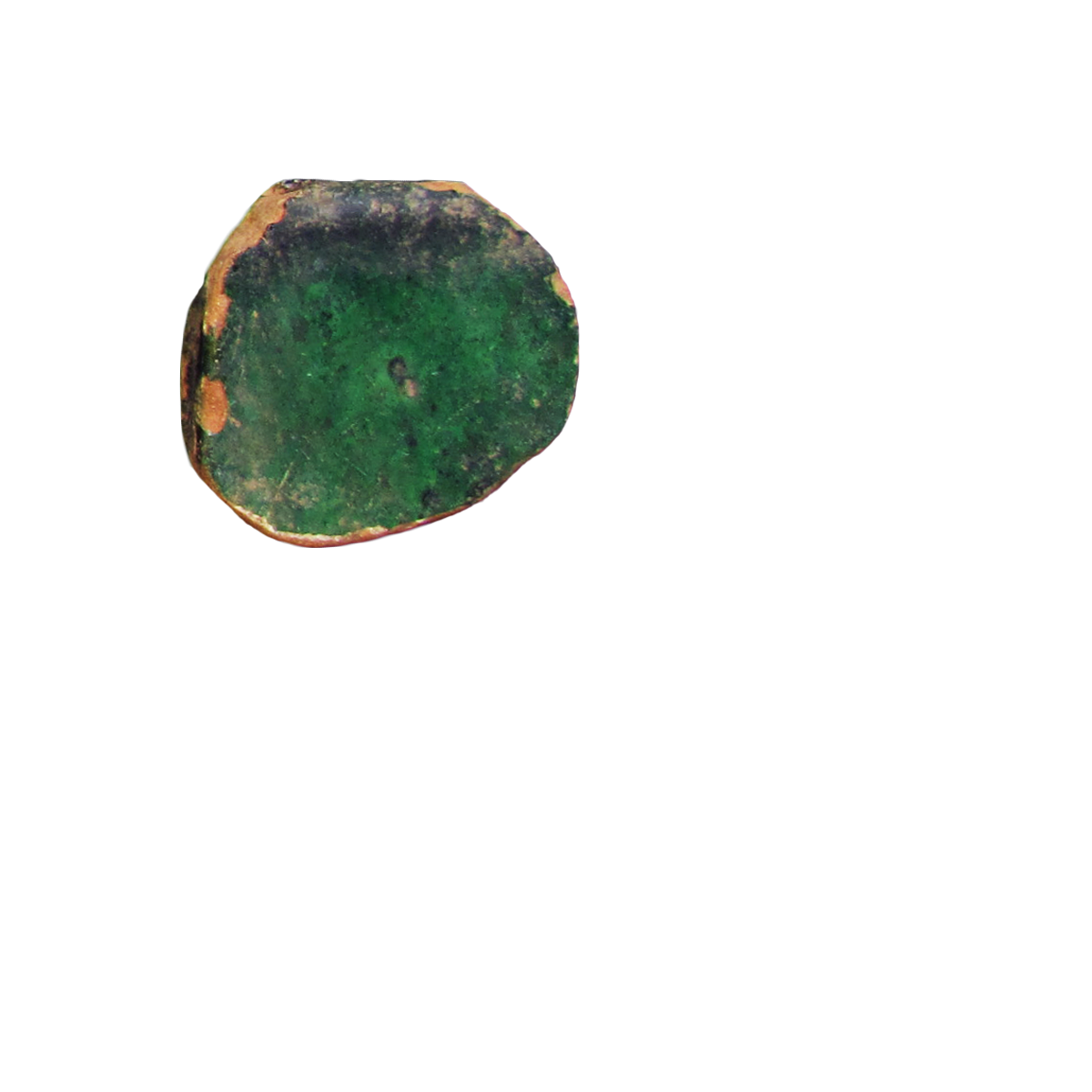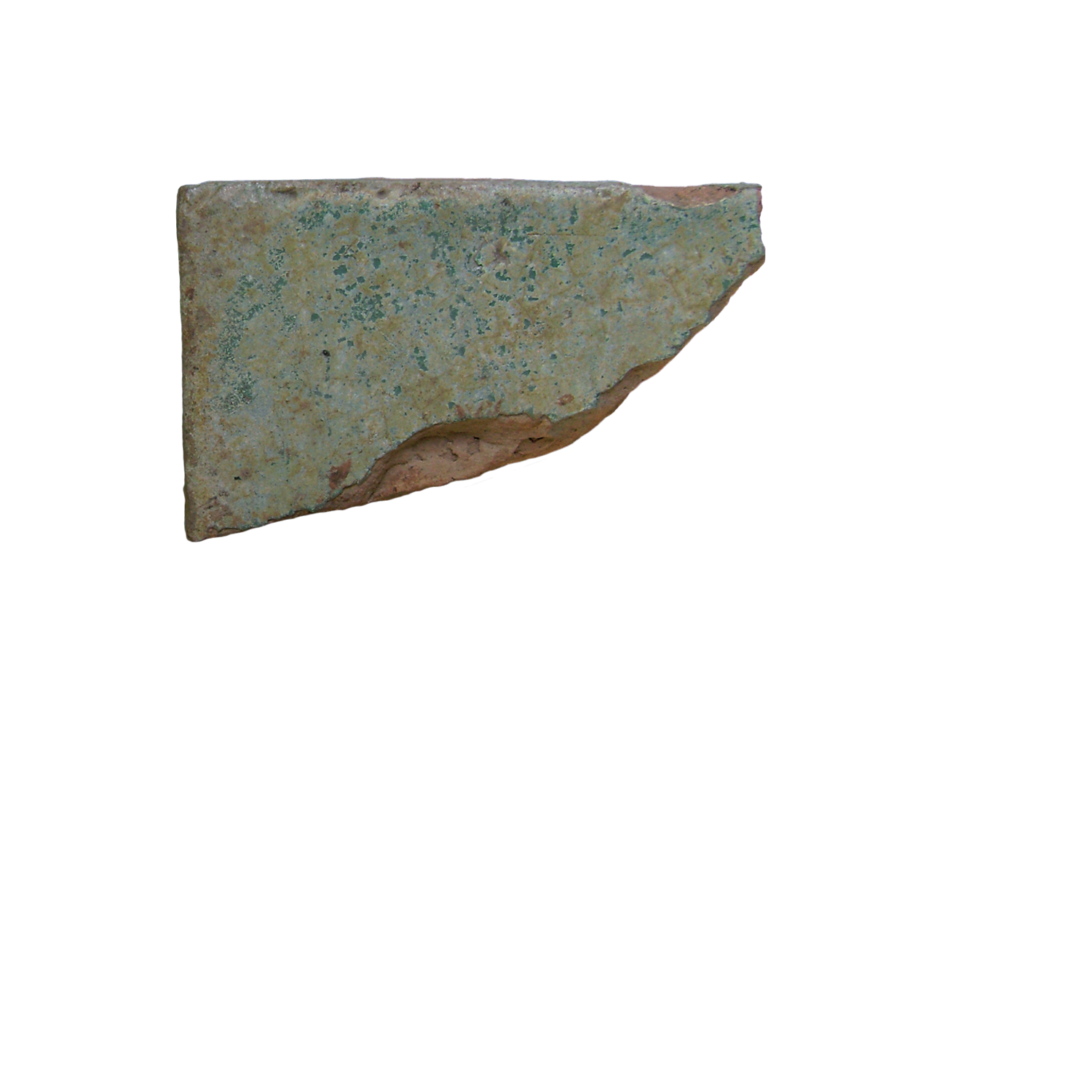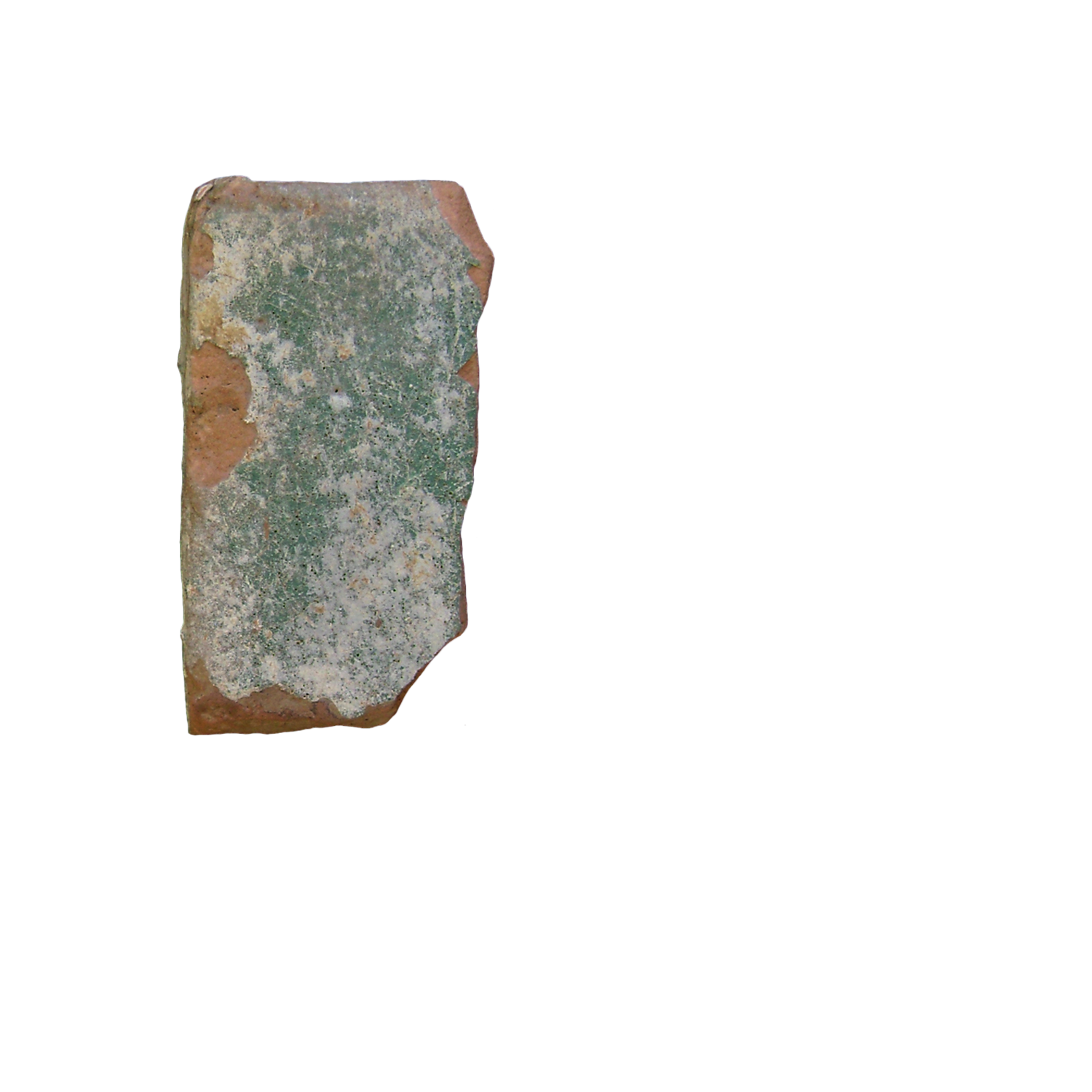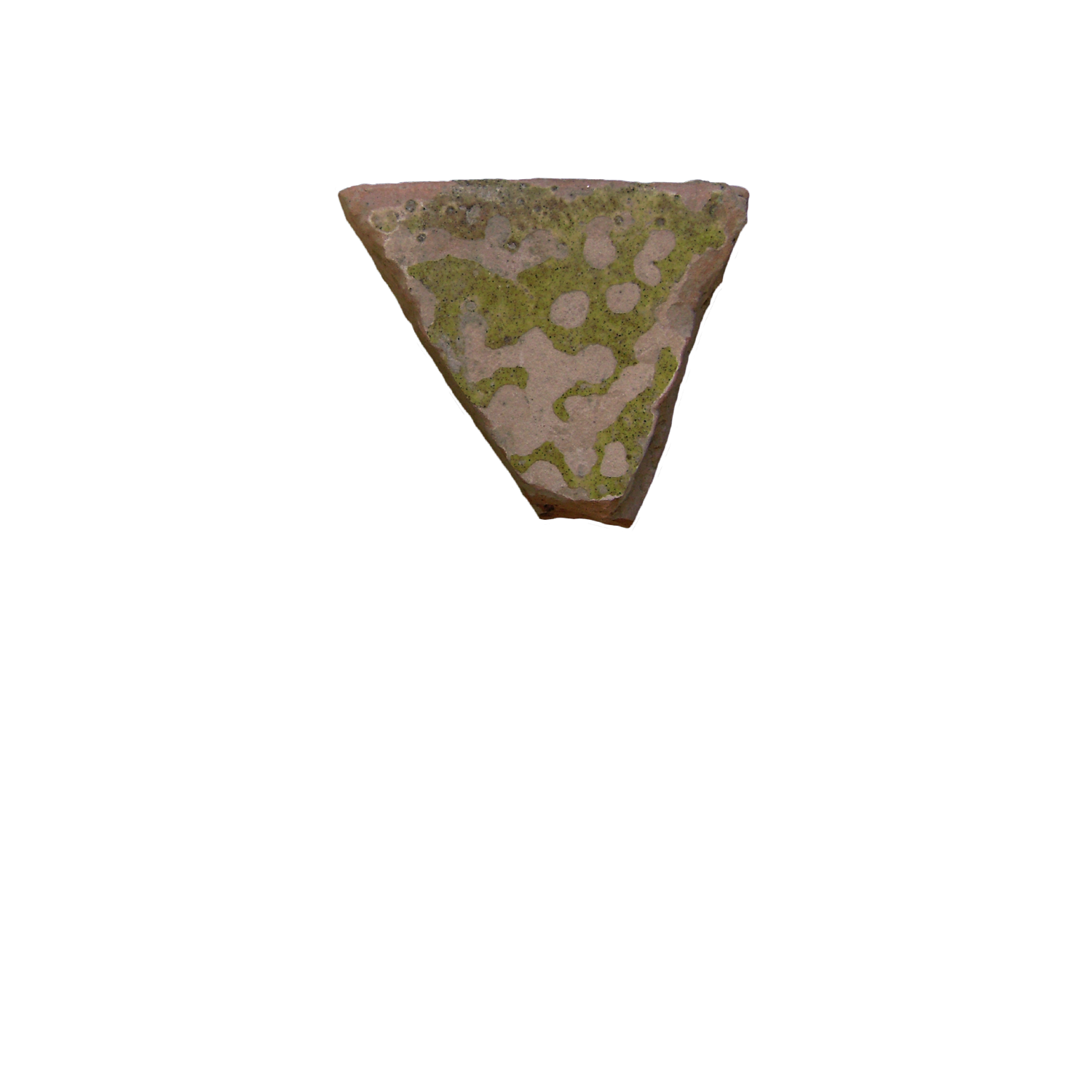The plain tiles total 229 items. They are characterised by the combination of shape and colour. The square tiles are by far the most abundant, with 88 specimens; the polygonal tiles are 47; the star-shaped tiles are 9. A few square specimens (side length 13.5-20 cm) and the star-shaped tiles (width ca 13 cm) are the largest items of the group. The majority of the plain tiles are covered by a transparent green glaze or an opaque turquoise glaze. Among the square tiles, the green specimens prevail, followed by the turquoise, while yellow/mustard and red/russet items are less represented. The hexagonal tiles in the shape of regular hexagon are 26; they are mostly turquoise, yellow and green ones are less abundant. The variant in the shape of elongated hexagon is exemplified by 11 tiles, associated with yellow and opaque turquoise glazes, only one is green. The star-shaped tiles exclusively belong to the plain group, they are all red.
Based on the more recent stratigraphic analysis of the ceramic assemblages from the Ghaznavid palace, it is possible to affirm that the production of the plain tiles started between the end of the 11th and the first half of the 12th century, earlier than the manufacture and use of the decorated tiles.
